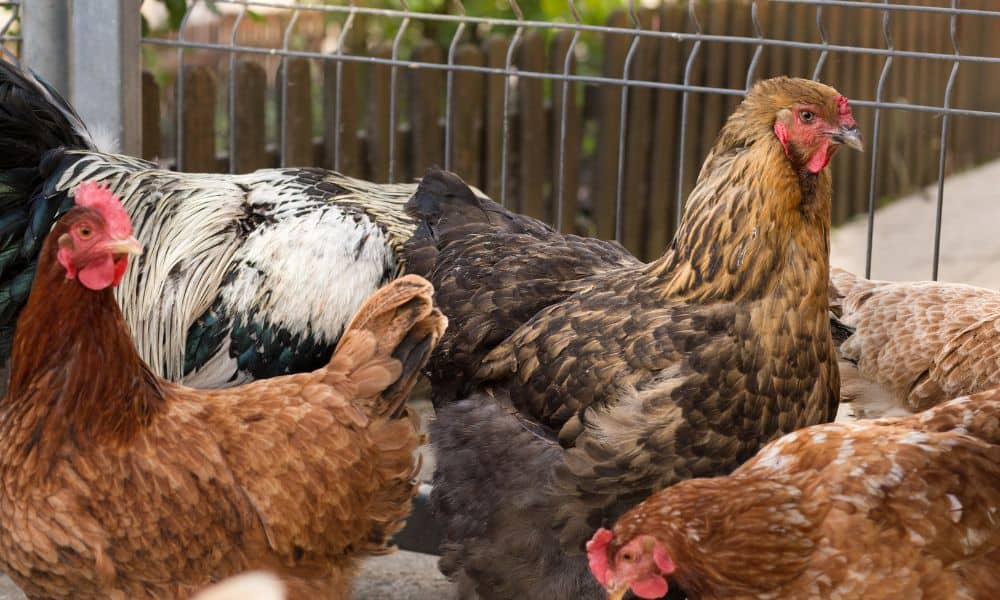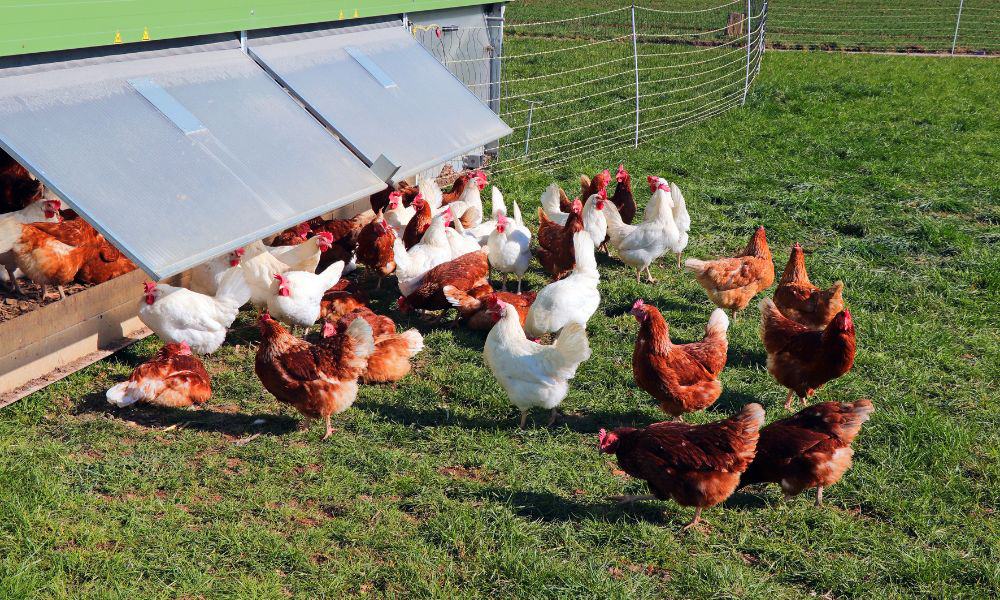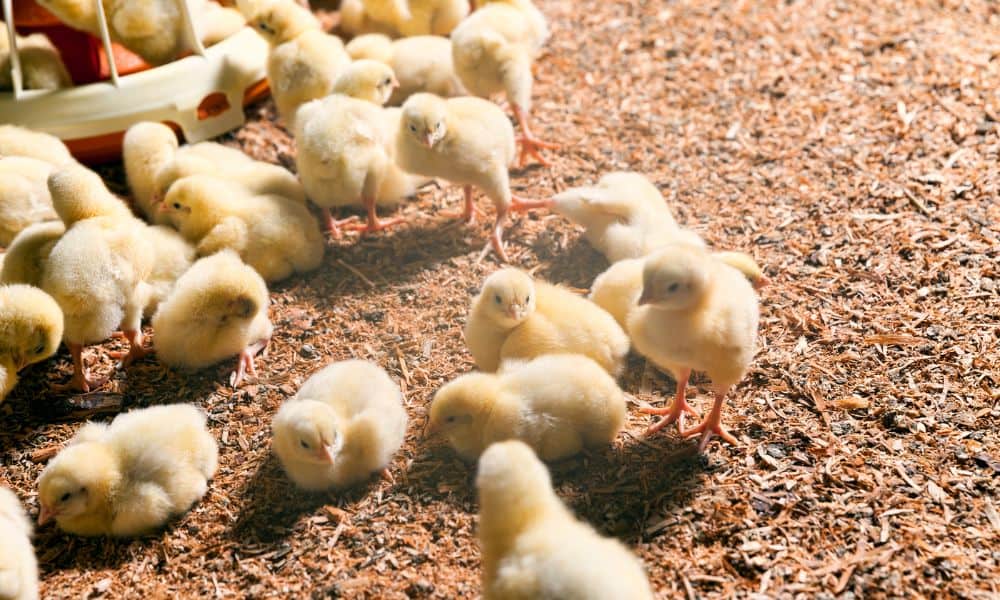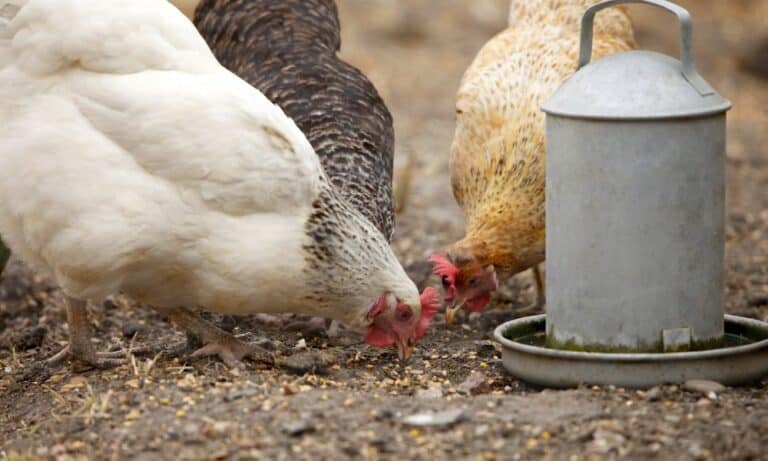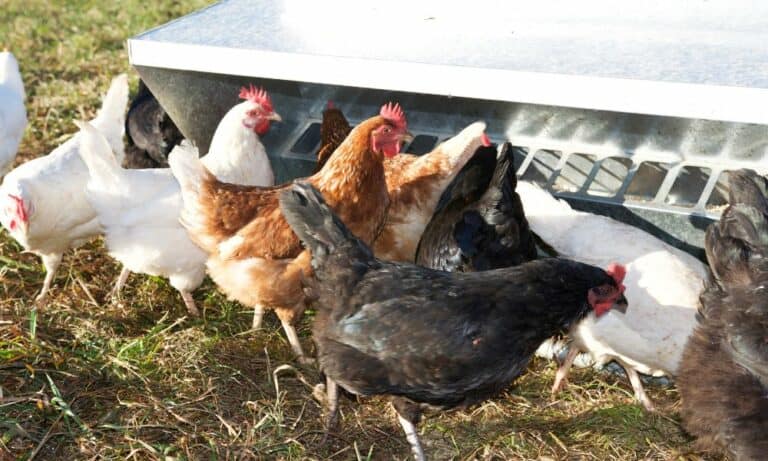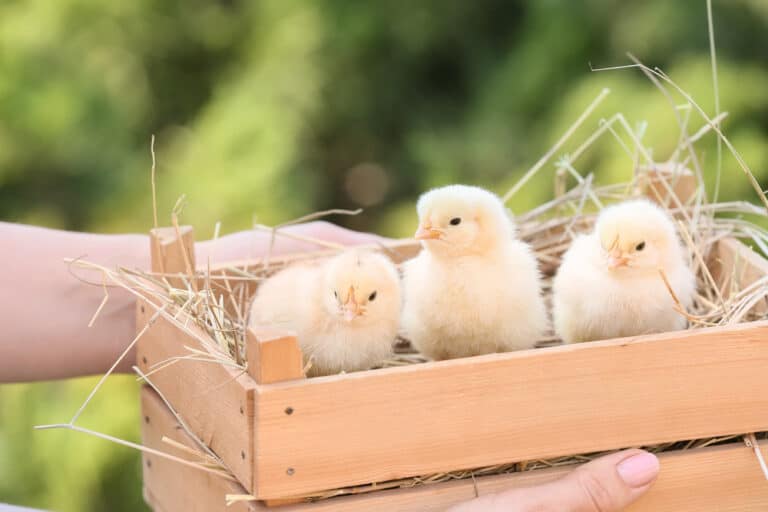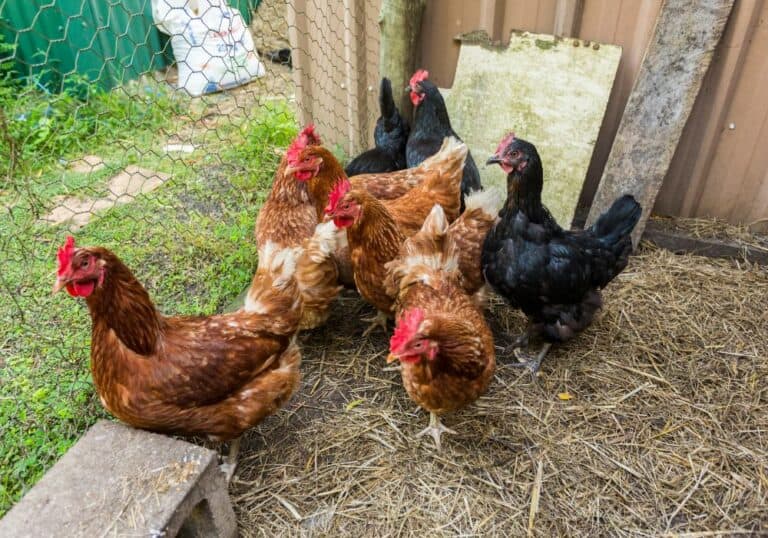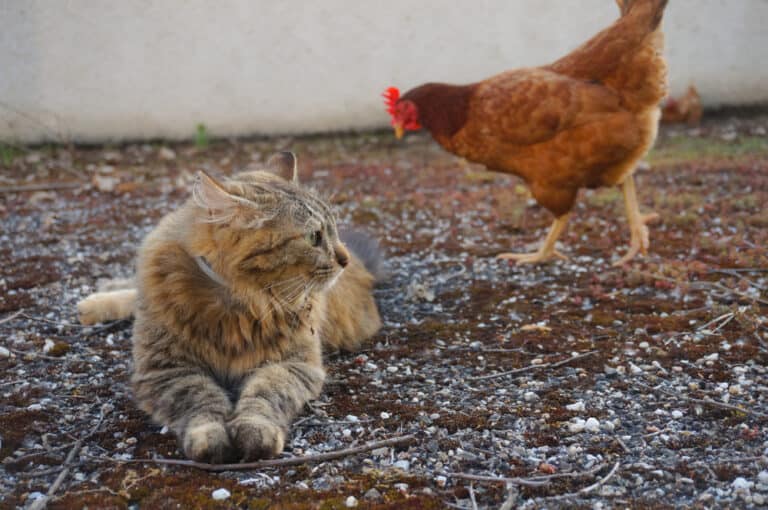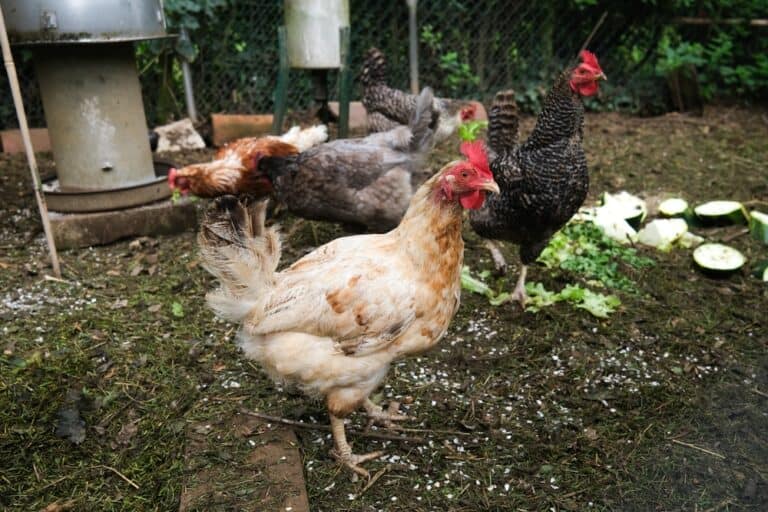Besides keeping fowl for eggs, you can also keep them for delicious meat. In this case, you may wonder how to raise meat chickens and choose the best breed for this purpose. It is not particularly problematic when fulfilling the necessary conditions for their proper growth and development.
You can produce these chickens in your yard when providing a clean coop, adequate bedding, and heat lamps. Besides, your flock needs plenty of fresh water and quality feed. Fortunately, the initial investment is relatively low, and fowl are not overly demanding. Wish you luck!
| Best meat chicken breeds | ||||
| Breed | Weight | Age | Eggs | Price |
| Rangers | 8 to 9 pounds(3.6 – 4 kg) | 12 to 16 weeks | / | $$ |
| Cornish Cross | 6 to 8 pounds(2.7 – 3.6 kg) | 6 to 8 weeks | / | $ |
| Cornish Roaster | 8 to 9 pounds(3.6 – 4 kg) | 12 to 14 weeks | / | $$ |
| Bresse | 4 to 7 pounds(1.8 – 3 kg) | 16 to 20 weeks | 200 per year | $$$ |
| Cornish | 8 to 10 pounds(3.6 – 4.5 kg) | 20 to 22 weeks | 150 per year | $$$ |
| Orpington | 8 to 10 pounds(3.6 – 4.5 kg) | 20 to 22 weeks | 200 per year | $$$ |
| Cochin | 8 to 11 pounds(3.6 – 5 kg) | 20 weeks | 175 per year | $$$ |
Reasons to Raise Meat Chickens
Raising your own chickens for meat has numerous advantages, including:
- You know everything about your chickens’ living conditions and diet
- It is a way to get healthy homegrown meat
- Such meat is without antibiotics and hormones
Even though you won’t save much money this way, the primary benefit is healthy food for your family. Additionally, growing chickens is an excellent way to be independent without relying on store supplies.
Things to Consider Before Raising Meat Chickens
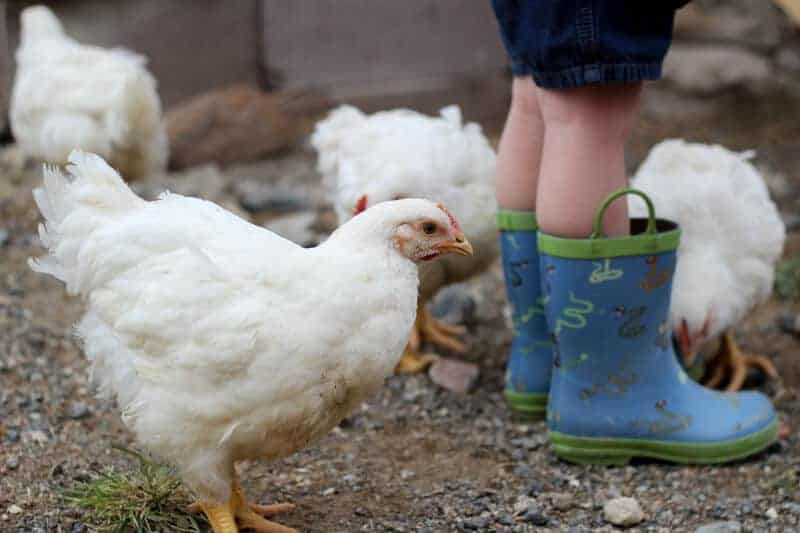
There are a few steps to finish before buying meat chicks. The first thing is to define what your plan is. The right time to order them depends on the following:
- The area where you live
- Available space in your yard
- Conditions you can provide for chickens
- Law regulation
- Possibilities for butchering
Many farmers begin growing chickens in early spring, but it is impossible if you live in a colder area. A wrong decision can decrease chicks’ survival rates, so you shouldn’t hurry.
If you plan to grow chickens for your family without plans to do it commercially, mid-June is an ideal period for a start. Since temperatures are still mild in that period of the year, your chicks have enough time to adjust to their new home. On the other hand, it is better to buy chicks earlier if you live in a hot climate.
There is one thing most people fail to check on time. You need to know whether local regulations allow keeping chickens and the limits in terms of breed, number, and way of keeping. Remember that some municipal laws permit keeping poultry, including chickens but prohibit killing them.
How to Raise Meat Chickens?
Once you finish with the first steps, it is time to start your business.
Step 1. Pick out the right breed
The best meat chicken breeds provide the highest yield in the shortest possible period. Luckily, the choice is comprehensive nowadays, including:
- Cornish Cross and Jumbo Cornish Cross
- Buff Orpington
- Cornish Roaster
- Rangers and Red Ranger Chickens
- Jersey Giant
- Cochin
- Bresse
Step 2. Prepare the space and equipment
Raising chickens requires having adequate equipment and organizing everything that makes their life comfortable and productive, including:
Living space for chickens
Chicks require a dry, draft-free, and clean coop. Providing approximately 4 sq ft (0.37 m2) of space per standard chicken and twice as much room for heavy breeds is necessary.
The coop should be far away from neighbors to prevent problems with odor, noise, and flies. Depending on the breed, you must provide about 8 to 15 sq ft (0.74 – 1.40 m2) of run space per chicken.
Accommodation for chicks
Remember that chicks need a heat source, like a heat lamp. The type depends on the climate in your region and is crucial for at least two to three weeks while chicks get feathers.
Provide an easy-to-clean brooder and keep a constant temperature of 90 or 95 F (32.2 – 35 C) inside. Then, reduce it weekly by 5 degrees until the moment to turn it off entirely.
Hang lamps from the ceiling and place them 18 to 24 inches (45.7 – 61 cm) from the litter. Remember that your goal is to heat chicks, not the air, so measuring air temperature provides you with irrelevant information.
Additionally, it is crucial to add adequate litter over the coop floor. The best options are 3 to 4 inches (7.6 – 10 cm) deep wood shavings, sawdust, or rice hulls. Always choose a brooder model without corners to prevent chick trapping.
Food and water
Chicks need feeders of the proper type and size, depending on their number. Initially, drinkers should have a capacity of 0.25 gallons (0.95 l), but you should replace them with models of over 1 gallon (3.8 l) later.
Meat chickens feeding |
|
| Age | Feed |
| Third week | Chick starter with 20% protein |
| Fourth week | Grower feed with 18% protein |
| Fifth week | Free feed choice |
| 6th to 9th week | Mixed broiler and grower formula with some grit for digestion |
| 10th+ week | Grower formula with free access to grit |
Initially, meat chicks require starter feed containing 20% protein. However, you should replace it with grower feed containing 18% protein when they are four weeks old. Provide free access to water and keep it fresh by cleaning and replenishing drinkers regularly.
Health maintenance
Never raise meat chickens and layers in the same space to prevent diseases and reduce stress. Always separate flock members by age and avoid overcrowding.
Keep the coop clean and disinfected, and call the vet for regular vaccination or when noticing possible signs of disease. Finally, limiting access to your flock is in the chickens’ best interest.
Step 3. Chose the place to buy meat chicks
Typically, you can purchase day-old meat chicks in a few possible ways, such as:
Hatchery
Most farmers order chicks straight from hatcheries. They ship a box with chicks in the mail shortly after hatching, and you can expect a package the next day at your local post office.
It is an excellent and affordable way to get a desired breed whenever you start growing chicks. You can pick out a delivery day, order any number of chicks you need, and select their gender.
This method’s downside is the possibility of getting weak or dead chicks after long transport. Besides, hatcheries always establish the minimum number of birds necessary for shipping, and you can’t order for fewer than that.
Local feed store
These stores get chicks mailed from hatcheries and take all the risk. You can pick them out yourself and find some on sale without a mandatory minimum per order. Unfortunately, local stores offer a limited breed selection, and there is no guarantee chicks are available whenever you need them.
Local breeders
Buying chicks from a local breeder is an excellent, affordable, and sustainable option for breeds like Orpingtons or Cochins. It is a perfect way to support small businesses and get chicks adapted to the local climate. Besides, your birds will be healthier because of lower stress levels than after shipping.
Be aware that there is no chance to find popular hybrids, like Cornish Cross or Rangers, this way because their reproduction is possible only in large hatcheries. Besides, these breeders are sometimes far away, and you need to drive for hours to find them.
Your own chicks
You can raise heritage breeds in your yard when there are adequate conditions for them. The first thing to do is to buy a quality rooster, 8 to 10 hens of the desired breed, and an incubator.
That way, you have complete control over the quality of chicks and can even profit by selling surplus fertile eggs and meat.
Even though this method makes you self-sufficient, keeping a breeding flock year-round can be expensive. Besides, you need to invest in an incubator and know there is no possibility of growing hybrids.
Budget for Raising Meat Chickens
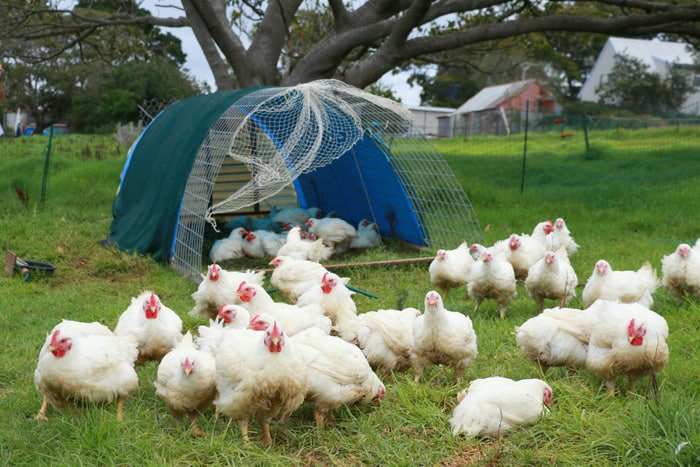
Planning a budget when deciding to grow meat chickens is crucial. Timely calculating your expenses in advance can save you from unpleasant surprises. Let’s check!
Variable costs
These expenses apply to each chicken you raise and include:
- $1 per day-old chick
- $0.30 per pound of organic chick starter feed
- $0.26 per pound of organic chick grower feed
- $3 per chicken for processing at abattoir
Fixed costs
These one-time costs include necessary equipment you can reuse for years, such as:
- $75 for broody boxes
- $175 for heat lamps, feeders, and drinkers
- $150 for a movable coop
- $400 for electric fencing for a chicken run and a charger
Summary
Knowing ways to raise meat chickens is helpful, whether when you plan to grow healthy meat for your family or have bigger business ambitions.
It is also an excellent way to save money or even earn it if you have enough space and time to devote yourself to farm work. It is enough to buy a batch of chicks and let them grow approximately 6 to 12 weeks before use. Well done!


